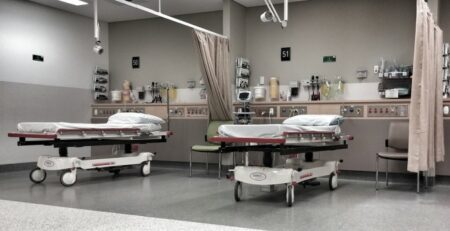How to Conduct a Hospital Feasibility Study in India: AStep-by-Step Guide
For a first-time doctor entrepreneur, a senior specialist planning their legacy, or an NRI promoter dreaming of contributing to their homeland, the vision of building a hospital is profoundly ambitious. It’s a venture that blends clinical excellence with complex business acumen. However, the path from vision to reality is paved with sobering statistics. A significant number of hospital projects in India face delays, budget overruns, or even failure, not due to a lack of medical expertise, but because of a flawed foundation: the planning stage.
The single most critical tool to mitigate these risks is a comprehensive hospital feasibility study. This isn’t just a report for bankers; it’s the strategic blueprint that validates your dream against market realities. It answers the fundamental question: Is this hospital viable, sustainable, and profitable?
This guide provides a step-by-step framework for conducting a feasibility study, illustrated with real-world challenges to underscore its importance.
Why a Feasibility Study is Your Non-Negotiable First Step
Many healthcare professionals, especially brilliant clinicians transitioning to entrepreneurship, underestimate the complexity of hospital project management. The common pitfalls include:
(1) The “Field of Dreams” Fallacy: “If I build it, they will come.” Without understanding local demographics and competition, a 100-bed hospital might struggle with a 30% occupancy rate for years.
(2) Financial Miscalculation: Underestimating CAPEX (construction, equipment) and, more dangerously, OPEX (staff salaries, utilities, maintenance) can lead to a debt trap.
(3) Regulatory Quagmire: Navigating the web of NABH, clinical establishment acts, pollution control, and fire safety norms after construction has begun is a recipe for costly delays.
A feasibility study systematically addresses each of these areas, transforming uncertainty into a calculated, data-driven strategy.
The Hospital Feasibility Study Checklist: A 6-Step Guide
Step 1: Project Concept & Market Analysis
Objective: To define your hospital’s core identity and validate its need in the target location.
Define Your Niche: Are you a multi-specialty tertiary care center or a focused specialty hospital (e.g., orthopedics, cardiology)? Your choice dictates everything from equipment to specialist recruitment.
Analyze the Catchment Area: Map a 5-25 km radius. Use demographic data (population density, age distribution, income levels) and health indicators to estimate potential patient volume.
Conduct a Competitive Analysis: Identify existing hospitals and clinics. What services do they offer? What are their occupancy rates and perceived strengths/weaknesses? This helps you find an unmet need.
Case Study Reference: A prominent cardiologist in a Tier-2 city planned a 50-bed cardiac hospital. The feasibility study revealed three existing mid-sized hospitals with strong cardiology departments, saturating the market for routine procedures. The study pivoted the plan towards a niche in preventive cardiology and rehabilitation, a service gap in the region, ensuring a unique value proposition.
Step 2: Technical & Operational Feasibility
Objective: To translate the medical vision into a practical, functional plan.
Site Selection & Assessment: Is the land easily accessible? What about proximity to residential areas or highways Conduct soil tests and assess infrastructure like water, power, and sewage connectivity.
Architectural Planning: Work with healthcare-specific architects to create a master plan that optimizes patient flow, separates clean and dirty utilities, and allows for future expansion.
Technology & Equipment Planning: List essential medical equipment, considering both initial purchase costs and long-term maintenance. Decide on the scope of the Hospital Information Management System (HIMS).
Step 3: Financial Feasibility – The Heart of the Study
Objective: To build a realistic financial model that proves profitability.
- Revenue Projections: Estimate revenue based on bed capacity, expected occupancy rate (phased over 3-5 years), and procedure mix (room tariffs, surgery costs, diagnostics).
- Cost Projections:
- Capital Expenditure (CAPEX): Land, construction, interior work, medical equipment.
- Operational Expenditure (OPEX): Salaries, utilities, drugs/consumables, marketing, administration.
- Funding Strategy: Determine the debt-to-equity ratio. Explore options like bank loans, investor funding, or promoter equity. A strong feasibility study is crucial for securing loans from banks or convincing investor groups.
- Financial Ratios & Breakeven Analysis: Calculate key metrics like Debt Service Coverage Ratio (DSCR), Return on Investment (ROI), and project the breakeven point (typically 3-6 years for a new hospital).
- Case Study Reference: An NRI promoter invested heavily in a hospital in his hometown based on emotional drivers. The project skipped a detailed feasibility study. During construction, unanticipated OPEX and lower-than-expected patient inflow created a severe cash crunch. A pre-emptive study would have provided realistic financial models, preventing over-leveraging and ensuring a smoother launch.
Step 4: Legal & Regulatory Compliance
Objective: To identify all necessary approvals and ensure the project is compliant from day one.
Licenses & Permits: List requirements from the Clinical Establishments Act, State Health Department, Municipal Corporation, Fire Department, and Pollution Control Board.
Accreditation Planning: Will you aim for NABH or JCI accreditation? Building the facility to accreditation standards from the start is far more efficient and cost-effective than retrofitting later—a key concern for existing hospital owners planning upgrades.
Step 5: Manpower Planning
Objective: To ensure you can attract and retain the talent needed to deliver quality care.
Staffing Structure: Define the number and types of staff required: senior consultants, junior doctors, nurses, paramedics, and administrative personnel.
Recruitment Strategy: How will you attract senior specialists to a new facility? This is a common challenge. Consider partnership models or attractive terms.
Training Needs: Plan for orientation and ongoing training, especially if implementing new technology.
Step 6: Implementation Schedule & Risk Assessment
Objective: To create a realistic timeline and anticipate potential roadblocks.
Project Timeline: Develop a phased timeline from land acquisition to commissioning, using tools like Gantt charts.
Risk Matrix: Identify potential risks (e.g., construction delays, cost escalation, lower patient inflow) and develop mitigation strategies.
Here’s a tabular version of the above steps for easy to understand:
Hospital Feasibility Study: 6-Step Checklist
| Step | Objective | Key Components |
| Project Concept & Market Analysis | Define hospital identity & validate market need | – Define niche: Multi-specialty vs focused specialty (e.g., cardiology, orthopedics) – Catchment area study (5–25 km radius, demographics, health indicators) – Competitive analysis: existing hospitals, occupancy, strengths/weaknesses |
| Technical & Operational Feasibility | Technical & Operational Feasibility | – Site selection & land assessment (accessibility, infrastructure, soil tests) – Healthcare-specific architectural planning (patient flow, clean/dirty utilities, future expansion) – Technology & equipment planning (CAPEX + maintenance, HIMS scope) |
| Legal & Regulatory Compliance | Identify all approvals & ensure compliance | – Licenses/permits: Clinical Establishments Act, Health Dept., Municipal Corp., Fire Dept., Pollution Board – Accreditation: NABH or JCI—designing to standards early is cheaper than retrofitting. |
| Financial Feasibility | Build a financial model to prove profitability | – Revenue projections: Beds, occupancy (3–5 yrs), procedure mix – Cost projections: CAPEX (land, construction, interiors, equipment) + OPEX (salaries, utilities, consumables, marketing) – Funding strategy: Debt-equity ratio, bank loans, investor equity – Financial metrics: DSCR, ROI, breakeven (3–5 years) |
| Legal & Regulatory Compliance | Identify all approvals & ensure compliance | – Licenses/permits: Clinical Establishments Act, Health Dept., Municipal Corp., Fire Dept., Pollution Board – Accreditation: NABH or JCI—designing to standards early is cheaper than retrofitting |
| Manpower Planning | Attract & retain required talent | – Staffing: Consultants, doctors, nurses, paramedics, admin staff – Recruitment: Specialist attraction via partnerships/incentives – Training: Orientation + ongoing programs (esp. for new tech) |
| Implementation Schedule & Risk Assessment | Create realistic timelines & plan for risks | – Project timeline: From land acquisition → commissioning (use Gantt charts) – Risk matrix: Delays, cost escalations, low patient inflow, mitigation strategies |
Learn from Others: Common Feasibility Study Failures
Many projects fail at the feasibility stage itself by making critical oversights:
- Underestimating the Power of Location: A beautiful hospital in a hard-to-reach location will struggle. Accessibility is paramount.
- Ignoring the “Voice of the Customer:** Assuming you know what patients want without surveys or focus groups can lead to a misaligned service offering.
- Optimistic Financials: Overestimating occupancy rates in the first year or underestimating operational costs is the most common reason for financial distress.
- Siloed Planning: The finance team, architects, and doctors must collaborate. A design that is clinically perfect but financially unviable is a failure.
Your Roadmap to Success Starts Here
A feasibility study is not an expense; it is your most valuable initial investment. It provides the clarity and confidence needed to move forward, attract the right partners and build a hospital that is not just a medical facility, but a sustainable and respected institution.
To make this process easier, we have created a detailed Hospital Feasibility Study Checklist Template. This comprehensive tool breaks down each step into actionable tasks, ensuring you don’t miss a critical detail.








Leave a Reply